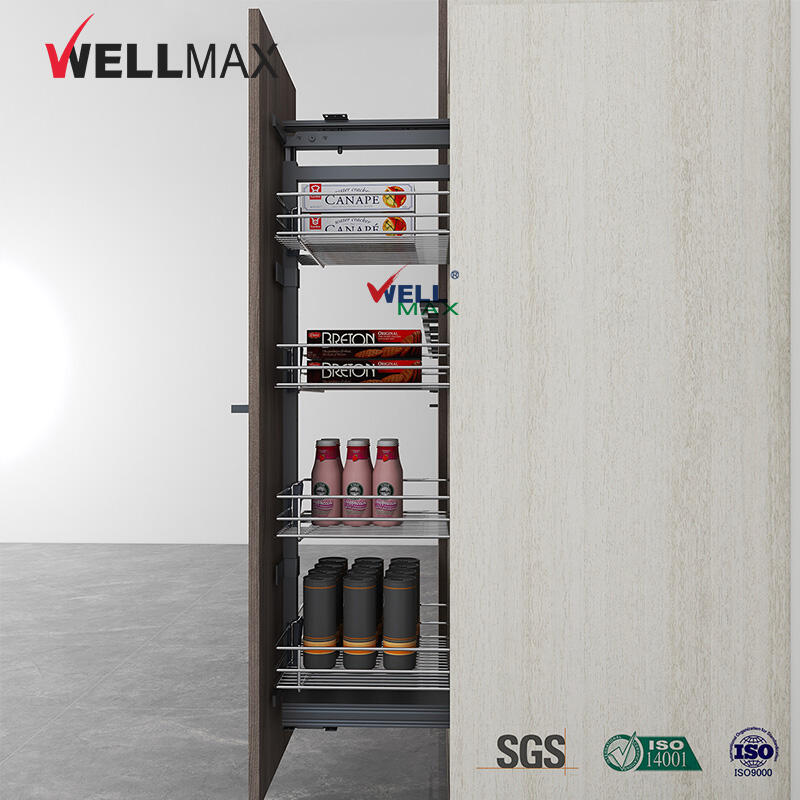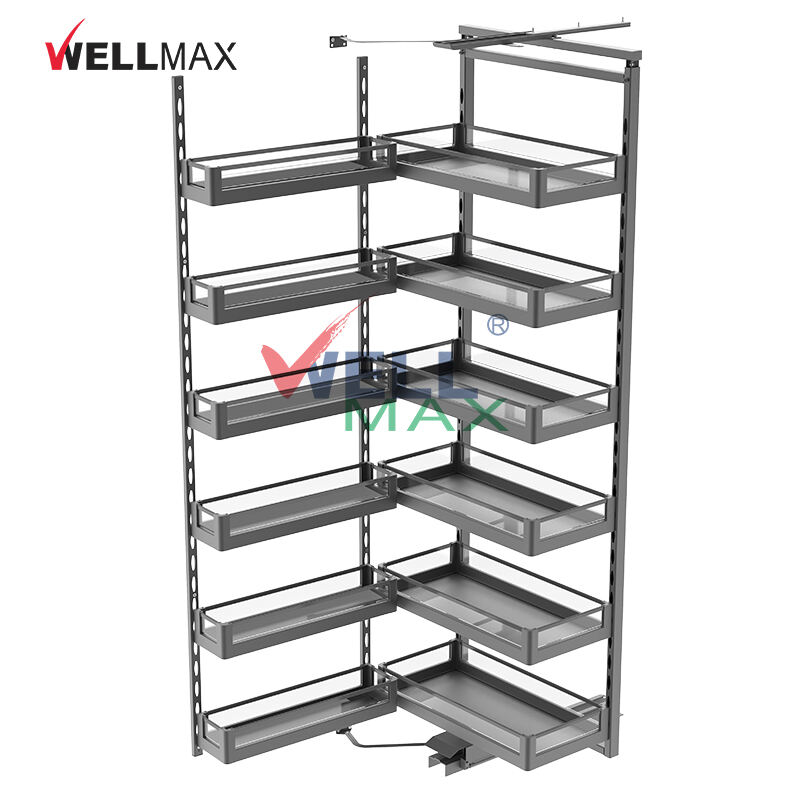
Explore the cutting-edge intelligent larder unit design, a fusion of smart technology and functional storage engineered to elevate kitchen organization. This larder unit incorporates intelligent features such as motion-sensor lighting, humidity control systems, and automated sliding mechanisms, ensuring items are easily visible and accessible. The design includes adjustable shelves with weight sensors that optimize storage layouts, while integrated digital displays can track inventory and expiration dates, reducing food waste. Constructed from premium materials like stainless steel and high-pressure laminates, it combines durability with a modern aesthetic, suitable for both contemporary and traditional kitchens. The intelligent larder unit also features soft-close drawers, precision ball-bearing slides, and energy-efficient components, reflecting our commitment to sustainable design. By integrating technology with thoughtful hardware engineering, this design sets a new standard for kitchen storage, offering a seamless blend of functionality, innovation, and user experience that caters to the demands of modern smart homes.
